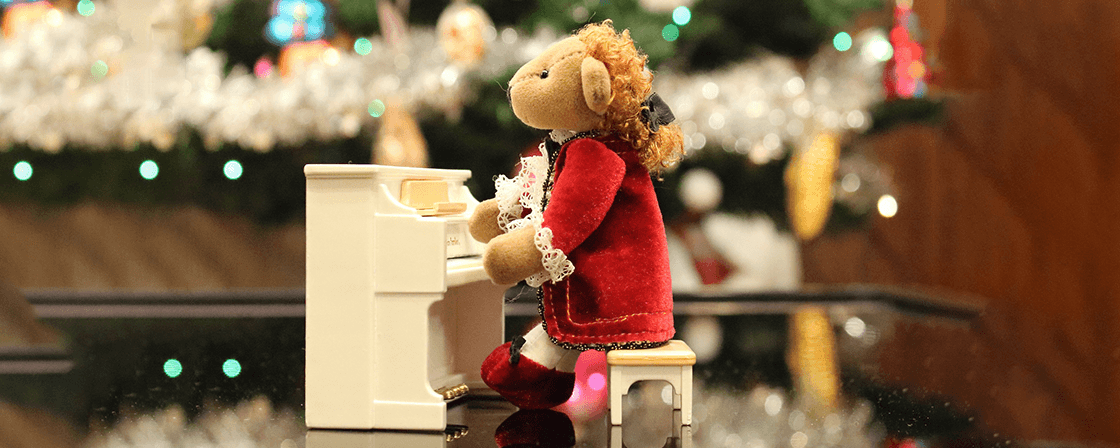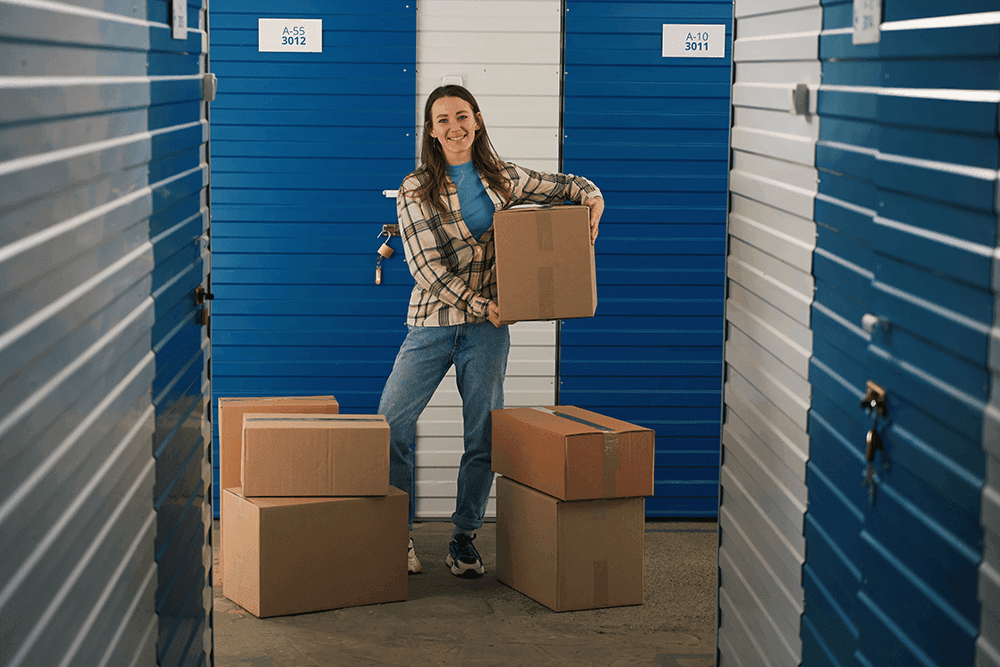
 Packing Tips
Packing TipsHow to Prepare Your Piano for Self-Storage
How to Prepare Your Piano for Self-Storage
Learning how to prepare your piano for self-storage is essential to keeping this delicate instrument in excellent condition. Pianos are not just large and heavy; they are also highly sensitive, with intricate components that can be easily damaged if stored improperly. Whether you’re storing a grand, upright, or digital piano, each type requires specific care to safeguard it against environmental factors like humidity, temperature changes, and physical damage during transport. Choosing a climate-controlled storage unit is crucial for maintaining the instrument’s quality over time.
Proper preparation includes thoroughly cleaning and securely packing your piano to prevent scratches, warping, or other damage. Using the right packing materials, such as heavy-duty blankets, and safely securing moving parts like piano keys and pedals are key steps in protecting your investment. Skipping these steps could lead to costly repairs or permanent damage. This guide will take you through the best practices for preparing your piano for self-storage, ensuring it stays safe, secure, and ready to perform beautifully when you retrieve it.
Select a Climate-Controlled Storage Unit
One of the most important factors to consider when preparing your piano for self-storage is selecting the right environment, particularly a climate-controlled storage unit. Pianos are highly sensitive to changes in temperature and humidity, and any fluctuations can cause serious damage to the instrument. A climate-controlled unit helps maintain consistent conditions, keeping both temperature and humidity levels stable, which is crucial for preserving your piano. Ideally, the humidity level inside the storage unit should remain below 42 percent, as excess moisture can warp the wood and damage the strings and other internal components.
Extreme temperatures can also have detrimental effects on your piano. In high heat, glue joints may loosen, the wood may expand, and delicate mechanical parts may warp or crack. In cold environments, materials such as the soundboard or hammers may become brittle and more susceptible to breaking. With a climate-controlled storage unit, you are essentially creating a safe, stable microenvironment for your piano, minimizing these risks.
Additionally, a controlled environment protects the piano’s finish. The lacquer or varnish on the piano’s exterior can fade or crack if exposed to harsh conditions. By storing your piano in a stable climate, you help maintain its visual beauty and prevent any unnecessary wear on the finish. Always opt for a climate-controlled unit when storing any musical instrument, especially one as delicate and valuable as a piano.
Before placing your piano into storage, inquire about the specific features of the storage facility. Ensure that the unit is truly climate-controlled and that there are no significant temperature fluctuations throughout the year. This extra layer of protection can be the difference between your piano remaining in pristine condition or suffering from irreparable damage.
Use the Correct Packing and Storage Materials
Pianos are not only heavy but also incredibly intricate instruments that require the right materials to protect them during storage. The materials you use to wrap and cover your piano can significantly impact its preservation. Heavy-duty moving blankets are ideal for wrapping the entire body of the piano, as they provide thick padding to prevent scratches, dents, or chips during transport and storage. The blankets should cover the piano entirely, with extra attention given to the edges and corners, which are particularly vulnerable.
After wrapping the piano in blankets, secure them with durable packing tape, straps, or ropes to ensure that the blankets don’t shift during the move. However, be cautious when applying the tape or straps to avoid placing them directly on the piano’s surface, as this could damage the finish. Once the piano is adequately wrapped and protected by the blankets, consider adding an extra layer of plastic wrap. This wrap serves as a moisture barrier, preventing excess humidity from penetrating the blankets and reaching the piano’s wood or internal components.
However, it’s essential to avoid wrapping the piano directly in plastic. Wrapping the piano itself in plastic can trap moisture inside, leading to mold or wood expansion. Instead, use the plastic wrap as a secondary barrier over the moving blankets to minimize exposure to potential humidity changes. For long-term storage, check the piano’s wrapping periodically to ensure that it remains secure and that the blankets haven’t shifted or loosened.
Lastly, make sure to invest in high-quality packing materials. Cheap or flimsy materials may tear or fail to offer sufficient protection, leaving your piano exposed to potential damage. Using the right packing materials is a small but critical investment in the long-term preservation of your instrument.
Follow the Manufacturer's Cleaning Instructions
By cleaning your piano before it goes into storage, you increase the chances of it being in tip-top condition when it's time to take it out of storage. Be sure to follow the manufacturer's instructions for proper cleaning and polishing. Above all, make sure that your piano is totally free from dust before proceeding with wrapping and storing it. The following are some basic cleaning instructions:
Start by gently dusting the piano’s keys with a feather duster or a soft, lint-free cloth. Avoid using any harsh chemicals or abrasive materials that could scratch the keys or damage the finish. Use a slightly damp cloth to wipe down each key, ensuring that you work in an “up and down” motion rather than side-to-side. This helps prevent dust from getting trapped between the keys. Immediately follow up with a dry cloth to remove any residual moisture.
For the exterior, use a piano-specific polish if necessary, but do so sparingly. Excess polish or using the wrong type of cleaner can lead to buildup or even damage the piano’s finish. Be especially cautious not to apply polish to any internal components, as it could interfere with the piano’s mechanics. Once your piano is clean and polished, you can move forward with the packing process, knowing that it is ready for long-term storage.
Regular cleaning before storage not only helps maintain the appearance of your piano but also prevents damage caused by dust buildup or environmental changes. It ensures that the instrument will be in optimal condition when you’re ready to bring it out of storage and use it again.
Cover the Keys during the Move and Storage
The keys of a piano are among the most delicate parts of the instrument, and extra care must be taken to protect them during both the move and the storage period. While the body of the piano is more durable, the keys can easily become damaged if exposed to dust, debris, or moisture. Before moving your piano, it’s important to cover the keys with a soft, lint-free cloth. This will act as a dust protector, preventing dirt from settling between the keys, which could cause them to stick or malfunction over time.
Using a white, lint-free cloth that is appropriately sized for your piano ensures that the keys are covered without any excess fabric that might interfere with the wrapping process. This cloth should remain in place throughout the storage period. If possible, use a dedicated dust cover specifically designed for piano keys, as this will offer the best fit and protection.
During the wrapping process, be sure to secure the piano’s lid over the keys to prevent accidental exposure. However, don’t lock the lid, as this could cause tension or misalignment in the piano’s structure if the wood shifts during storage. By securing the keys and covering them properly, you ensure that this essential part of the piano remains in pristine condition throughout the moving and storage process.
Protect the Piano with Heavy-Duty Moving Blankets and Other Materials
Properly wrapping and protecting your piano is one of the most important steps in ensuring its safety during long-term storage. Moving blankets are the first line of defense against physical damage, such as scratches, dents, or impacts that may occur during transport or while the piano is in storage. These heavy-duty blankets provide thick padding to absorb shock and prevent scuff marks on the piano’s delicate wood surface. The blankets should cover every part of the piano, including the legs, pedals, and body.
Once the piano is fully wrapped in moving blankets, you’ll need to secure them tightly using packing tape, straps, or ropes. This ensures the blankets don’t shift or slip off during the move. Be mindful not to place the tape or straps directly on the piano’s surface, as this could damage the finish. Instead, secure the materials over the blankets to keep everything in place. After wrapping the piano with blankets, add an extra layer of plastic wrap over the top to protect against moisture.
It’s essential to note that plastic wrap should never come into direct contact with the piano, as this can trap moisture and lead to warping or mold growth. Instead, the plastic wrap should only be used as a secondary layer over the moving blankets to create a moisture barrier. This additional protection is especially important if the storage unit is not climate-controlled, as temperature fluctuations can lead to condensation and other moisture-related issues.
For long-term storage, check the piano periodically to ensure the blankets and plastic wrap remain securely in place. If you notice any signs of moisture or wear in the materials, replace them promptly to prevent damage.
Hire Professional Movers
It is well worth it to hire professional movers to transport your piano. Some pianos can weigh more than 1,000 pounds! Professional movers have the necessary equipment to transport your piano in such a way that reduces the risk of damage to the piano and eliminates the risk of your own personal injury. Additionally, many professional moving companies offer insurance coverage for high-value items like pianos. This provides an extra layer of protection in case anything goes wrong during the move.
When selecting a moving company, be sure to inquire about their experience with pianos and ask if they have any certifications or special training in handling musical instruments. By hiring professionals, you can rest assured that your piano will be transported as efficiently and carefully as possible, allowing you to focus on other important aspects of your move.
Once in Storage, Check the Piano Periodically
Even after carefully placing your piano in storage, the maintenance doesn’t stop there. Pianos are sensitive to environmental changes, and long-term storage can sometimes lead to unexpected issues like temperature shifts, moisture buildup, or even pest infestations. To ensure your piano remains in good condition, it’s essential to check on it periodically.
During these check-ins, inspect the wrapping materials to make sure they are still securely in place and that no moisture has penetrated the blankets or plastic wrap. If you detect any signs of moisture or mold, address the issue immediately by drying out the area or replacing the materials. Additionally, open the piano’s wrapping occasionally to inspect the keys, pedals, and other components for signs of wear or damage.
Do Not Tune Your Piano before Placing it in Storage
One common misconception about storing a piano is that it should be tuned before being placed in storage. However, this is not recommended. Pianos are highly sensitive to their environment, and the temperature and humidity fluctuations that occur even in well-regulated storage units can cause the piano’s strings and internal components to shift slightly. As a result, the piano is likely to go out of tune during storage, regardless of any tuning that was done beforehand.
Instead of tuning your piano before storage, wait until you’ve removed it from the storage unit and it has had time to acclimate to its new environment. Once the piano is back in your home or new location, allow it to sit for at least two weeks, giving it time to adjust to the ambient temperature and humidity levels. After this period, schedule a professional tuning session to restore the piano’s sound quality. Tuning the piano too soon after moving it from storage can result in inaccurate tuning, as the piano’s internal components may still be adjusting to the new environment.
We're Your Storage Solution!
Storage Rentals of America is your convenient self-storage solution. So come into our office or give our storage experts a call at 1-800-457-5678. Our call center is available 7 days a week and can help determine which storage unit size best fits your storage needs.



